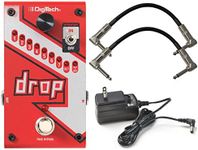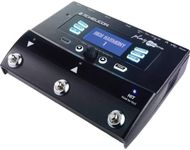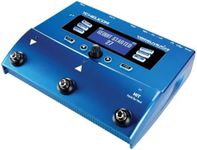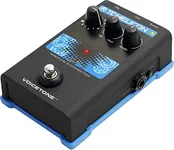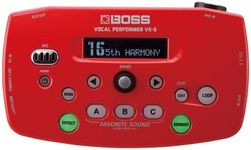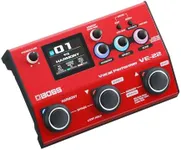Buying Guide for the Best Vocal Effects
When it comes to picking the right vocal effects processor, it's important to understand the key specifications and how they align with your needs. Vocal effects processors can enhance your voice in various ways, from adding reverb and delay to pitch correction and harmonization. Knowing what each spec means and how it impacts your sound will help you make an informed decision. Here are the key specs to consider when choosing a vocal effects processor.Effects TypesEffects types refer to the different kinds of sound modifications a processor can apply to your voice, such as reverb, delay, chorus, pitch correction, and harmonization. This spec is important because it determines the range of sounds you can create. If you need basic enhancements, a processor with reverb and delay might suffice. For more creative control, look for models that offer a wide variety of effects. Your choice should depend on the style of music you perform and the specific sound you want to achieve.
Number of PresetsPresets are pre-configured settings that allow you to quickly apply a specific effect or combination of effects. This spec is important because it can save you time and effort, especially during live performances. Processors with more presets offer greater flexibility and convenience. If you perform different genres or need to switch effects quickly, look for a model with a high number of presets. If you prefer to customize your settings, fewer presets might be sufficient.
User InterfaceThe user interface refers to how you interact with the vocal effects processor, including the layout of buttons, knobs, and displays. A user-friendly interface is important because it makes it easier to navigate and adjust settings, especially in a live setting. Simple interfaces with clear labels and intuitive controls are ideal for beginners. More advanced users might prefer interfaces with more detailed control options. Consider how comfortable you are with technology and how much time you want to spend learning the device.
ConnectivityConnectivity options include the types of inputs and outputs available on the processor, such as XLR, USB, and MIDI. This spec is important because it determines how you can integrate the processor with other equipment, like microphones, mixers, and computers. If you plan to use the processor in a studio, look for models with USB or MIDI connectivity for easy integration with recording software. For live performances, ensure the processor has the necessary inputs and outputs to connect to your PA system.
Build QualityBuild quality refers to the durability and construction of the vocal effects processor. This spec is important because it affects the longevity and reliability of the device, especially if you plan to use it frequently or take it on the road. Look for processors with sturdy construction and high-quality materials. If you perform live often, a rugged build is essential to withstand the rigors of travel and stage use. For studio use, build quality is still important, but you might prioritize other features more.
LatencyLatency is the delay between when you sing into the microphone and when you hear the processed sound. This spec is important because high latency can be distracting and affect your performance. Lower latency is better, especially for live performances where real-time feedback is crucial. Look for processors with minimal latency to ensure a seamless experience. If you primarily use the processor in a studio setting, slightly higher latency might be acceptable, but it should still be as low as possible.
